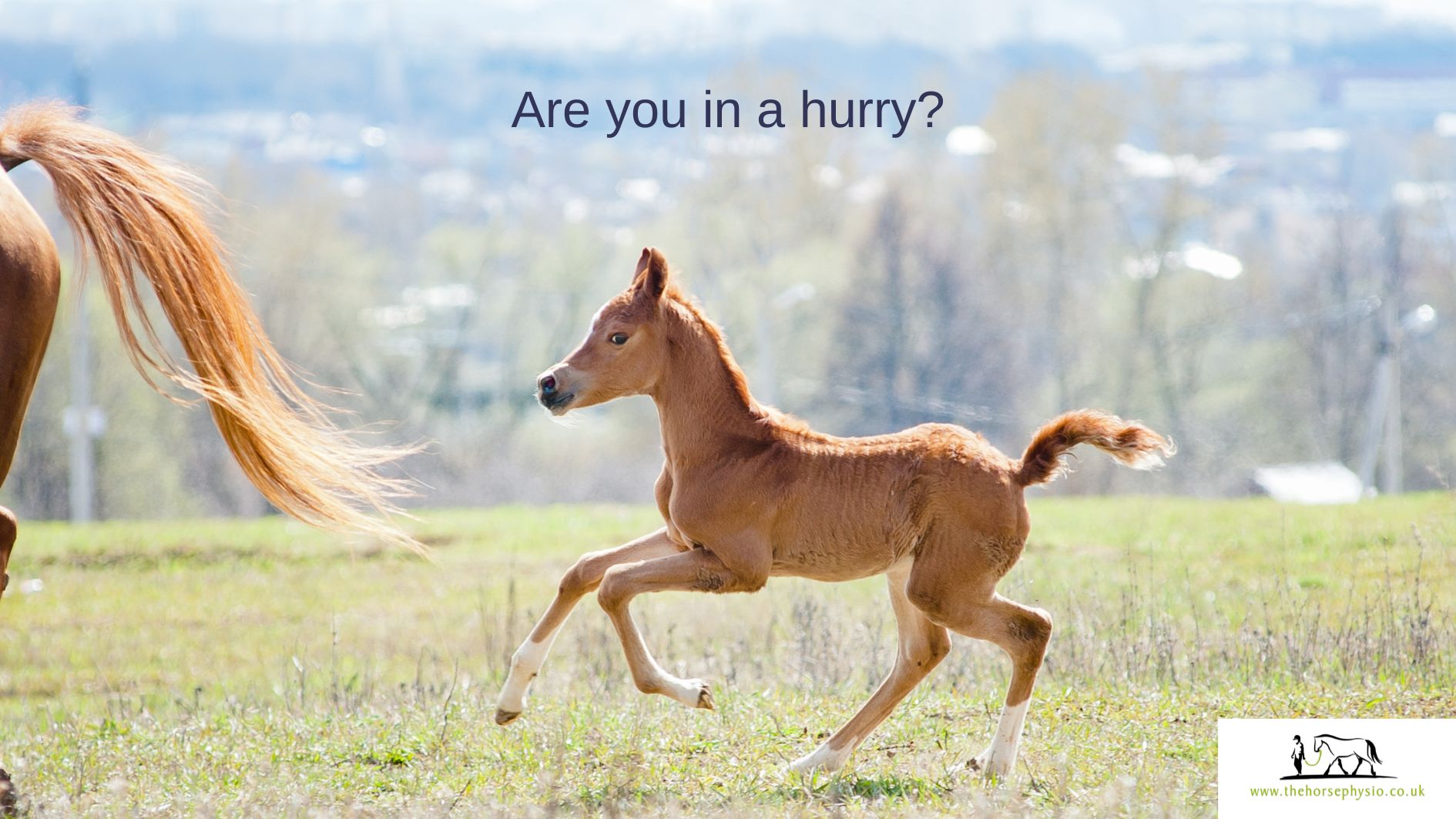Should we back young horses?
You can listen to the audio version of this blog here.
It’s an age-old debate. The vast majority of younger horses are backed (‘broken in’) at three or four years old. At this age, the growth plates have not fused, and many horses are unable to function optimally into their teens, potentially through damage that occurred in relation to starting ridden work too early.
The usual comment (in the circles that I move in) is that we start our horses too young, and we should give them more time to grow before we ask them to accept the weight of a rider and the pressures that we put upon them as a ridden horse. I want to suggest an alternative viewpoint.
We know that the body grows in response to the stresses placed upon it. Bones, muscles, tendons and ligaments develop in response to the stresses placed upon them. If we want health, longevity, and soundness in our horses, then I believe that we should be introducing their bodies to milder versions of these stresses early on. Certainly as early as two years old, and perhaps even as a yearling.
Before you throw your arms up in horror, I am not talking about a horse being able to walk, trot, and canter with a rider at two or three years old. I am talking about very slowly, gradually, over time, introducing the horse to the work that we would like his body to be able to tolerate into old age. That begins with him understanding what we ask of him from the ground.
And yes, it moves on to asking him to accept the weight of the rider. Beginning, perhaps with a roller, and then a saddle, and then literally the weight of a rider on his back for a few seconds. There are plenty of different ways to approach this. If you are training for a marathon, you start small and build up slowly. If you are training your horse to carry the weight of a rider, you start small and build up slowly, over years rather than over weeks or months.
I wonder if leaving a young horse in the field and not handling him at all, then throwing him in the deep end by backing him as a four-year-old in just a few weeks, could be similar to allowing a child to run free with no boundaries until they are 21, and then expecting them to fit into the world of work? Their brains and bodies would struggle.
As I was discussing with a client, one difficulty in this is that given an inch, many will take a mile. Where do we draw the line between what is too little and what is too much? Who sets the rules? How do we know what is right and what is wrong?
I’m reminded of the debate over the use of the whip. In the right hands, the whip is used as an extension of the arm to gently touch the horse in places that the arm cannot reach so that it is clear to him what’s being asked of him. And yet, given an inch, many take a mile, and misuse of the whip is widespread. The only truly effective solution that I can see at this time would be to ban the whip. Using that analogy, should we ban backing any horse under six years old or under eight years old?
As usual, I don’t have the answers. But I would like the debate to continue, with science supporting the arguments to balance some of the emotions involved. What are your thoughts?
You can listen to the audio version of this blog here.
Sue Palmer MCSP, aka The Horse Physio, is an author, educator, and award-winning Chartered Physiotherapist. Sue specialises in understanding the links between equine pain and behaviour, caring deeply for her clients, and promoting calm, connection, courage and confidence through curiosity, compassion, clarity, and creativity.
Popular books and online courses from Sue Palmer include:
Harmonious Horsemanship, co-authored with Dr Sue Dyson
Understanding Horse Performance: Brain, Pain or Training?
Horse Massage for Horse Owners
Stretching Your Horse: A Guide to Keeping Your Equine Friend Happy and Healthy
Sue is registered with the RAMP, the ACPAT, the IHA, the CSP and the HCPC.
